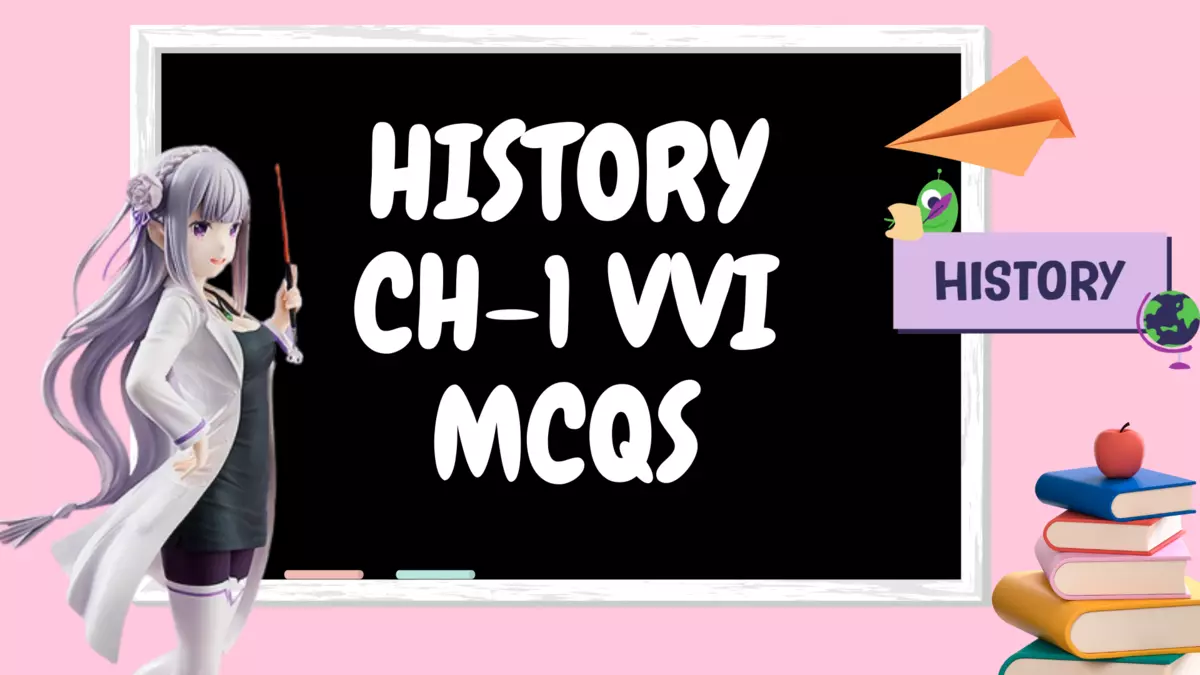VVI MCQ Of Class 12 history Ch-1: In this Article, we were given very important MCQs from Class 12 history Ch-1, Bricks, Beads and Bones The Harappan Civilisation. In this post, you get upcoming very important MCQs and its answer in a very simple way. In this post, we cover class 12 chapter 1 history MCQs, class 12 history chapter 1 notes in English, Bricks, Beads, and Bones The Harappan Civilisation mcqs.
Ncert VVI MCQ Of Class 12 history Ch-1 | Bricks, Beads, and Bones The Harappan Civilisation MCQs
| Class | 12th |
| Chapter | 1 |
| Chapter Name | Bricks, Beads, and Bones The Harappan Civilisation |
| Board | CBSE |
| Book | NCERT |
| Subject | History |
| Medium | English / History |
| Study Materials | MCQ |
Quick Summary: Bricks, Beads, and Bones The Harappan Civilisation

The area of the Harappan civilization is 12, 99, 660 sq km. The distance between Harappa and Mohenjodaro is 670 km. The length of the huge bath found in Mohenjodaro is 11.88 m, width is 7.01 m. And the depth of 2.48 m. Was. The Harappan civilization was contemporary with civilizations like Egypt, Mesopotamia, Crete, Iran, and China.
Mohenjodaro is a Sindhi language word that means the hermitage of the dead. Archeology is a Sanskrit language word. It means knowing the essence of old things and protecting them.
In 1875, Cunningham’s report was first presented on the Harappan seal. One of the largest inscriptions has been found from Dholavira of Harappa in the form of a notice board, which has a total of 9 signs.
VVI MCQ Of Class 12 history Ch-1 | Multiple Choice Questions of Bricks, Beads, and Bones The Harappan Civilisation

1. Who first mentioned the Harappa mound in 1826 AD?
(a) Charles Masson
(b) John Breton
(c) William Breton
(d) Sir Jhon Marshel
(2) Who made the discovery in 1922 AD. Of Mohenjodaro?
(a) Dayaram Sahni
(b) Madhoswarup Vats
(c) Rakhaldas Banerjee
(d) Rangnath rao
(3.) Evidence of plow has been found in the Indus Valley Civilization-
(a) Harappa
(b) Mohenjodaro
(c) Ropar
(d) Kalibangan
4. Which archaeologist has thrown light on the concave mill found in the Harappa civilization?
(a) Cunningham
(b) Ernest Mackay
(c) John Marshall
(d) Surajan
5. Which metal was not known to the inhabitants of the Indus Valley?
(a) Gold
(b) Silver
(c) iron
(d) Copper
6. Mohenjodaro is the word of which language?
(a) Hindi
(b) Sindhi
(c) Urdu
(d) Farsi
7. Kalibangan is situated in-
(a) in Sindh
(b) in Bengal
(c) in Uttar Pradesh
(d) in Rajasthan
8. Where did Rai Bahadur Dayaram Sahni get the excavation done?
(a) Mohenjodaro
(b) Harappa
(c) Lothal.
(d) Kalibangan
9. Which of the following Hindu deities was the chief deity of the Indus civilization?
(a) Ganesha
(b) Shiv
(c) Vishnu
(d) Varun
10. Indus Valley Civilization is not considered contemporary of whom?
(a) Chinese civilization
(b) Egyptian civilization
(c) Mesopotamia’s civilization
(d) crit civilization
11. To which era is the Harappan civilization?
(A) Pre-Stone Age
(B) Neolithic Age
(c) Iron Age
(d) Bronze Age!
12. Which was the biggest city of the Harappan civilization?
(a) Mohenjodaro
(b) kalibangan
(C) lothal
(d) Rangpur
13. Which one of the following is not under archeology?
(A) Literature
(b) coins
(c) record
(d) Preoccupation
14. Asiatic Society was established in Calcutta by-
(A) Kaniyam
(b) Fleet
(c) D.C. Government
(d) William Jones!
15. The administration of the Harappan civilization was-
(A) Monarchical
(B) Democratic
(d) republican
16. In which year Harappa was excavated for the first time?
(a) 1921
(b) 1924
(c) 1927
(d) 1930
17.From where is Godipada found in Indus civilization?
(a) Kalibangan
(b) Ropar
(c) Banwali
(d) Lothal
18. From where was the idol of a dancing girl found in the Indus Civilization?
(a) Lothal
(b) Harappa
(c) Mohenjodaro
(d) Manda
19. Mohenjodaro is situated on the bank of which river?
(a) Sutlej
(b) Saraswati
(c) Ravi
(d) Sindh
20. In which part of India did the Harappan civilization develop?
(a) South
(b) Northeast
(c) North-West
(d) Madhya Bharat
21. On the bank of which river is Lothal situated?
(a) Sindh
(b) vyas
(c) Bhogwa
(d) Ravi
22. In which year did Rakhaldas Banerjee get the remains of Mohenjo Daro?
(a) 1920
(b) 1921
(c) 1922
(d) 1923
23. Where were the remains of a huge bathhouse found in the Indus Valley Civilization?
(a) Harappa
(b) Mohenjodaro
(c) Kalibanga
(d) Lothal
24. The Indus Valley Civilization was the twin capital.
(A) Mohenjodaro-Chandudaro
(b) Harappa-lothal
(c) Harappa-Mohenjodaro
(d) Loyal-Kalibanga
25. Harappa is situated on the bank of which river?
(a) Sindh
(b) vyas
(c) Sutlej
(d) Ravi
26. Where is Lothal located?
(a) Gujarat
(b) West Bengal
(c) Rajasthan
(d) Punjab
27. Harappa was excavated by-
(a) John Marshall
(b) R. D. Banerjee
(c) Dayaram Sahni
(d) S. R. Rao
28. Who is called the father of Indian archaeology?
(A) Lord Curzon
(b) Alexander Cunningham
(c) Dayaram Sahni
(d) Lord Dalhousie
[Ans- 1. (a), 2. (c), 3. (d), 4. (b), 5. (c), 6. (b), 7. (d) , 8. (b), 9. (b), 10. (d), 11. (d); 12. (a), 13. (a), 14. (d), 15. (c), 16. (a), 17. (d), 18. (c), 19. (d), 20. (C), 21. (C), 22. (C), 23. (B), 24. (C), 25. (D ), 26. (a), 27. (c), 28.(b)]
